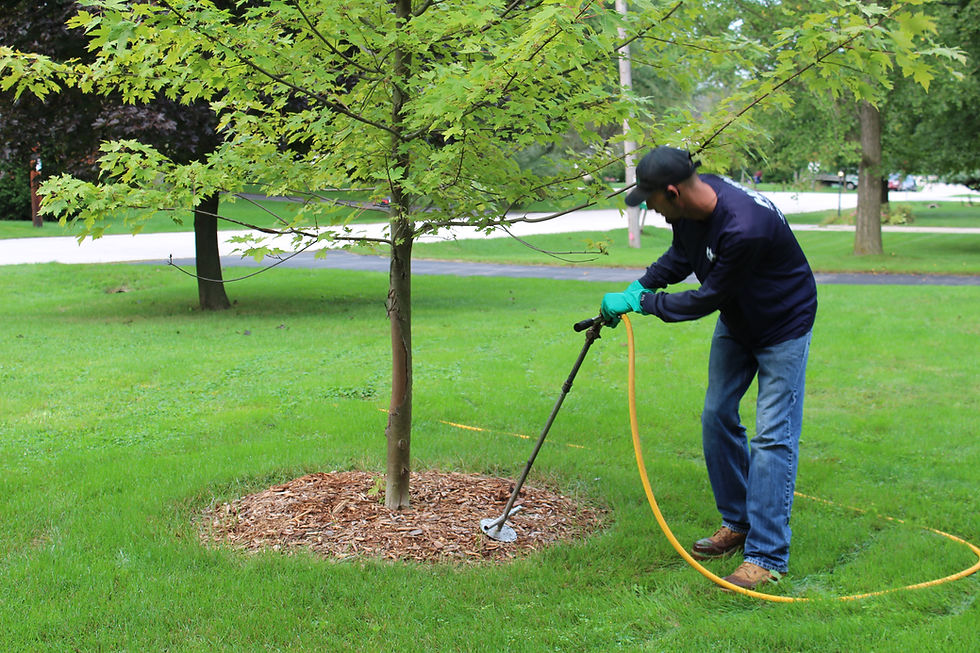5 Things To Do This Spring to Improve Tree Health
- August Hoppe

- Mar 3, 2021
- 2 min read
Updated: Apr 19, 2022
Written by: Fred Hoppe, Board Certified Master Arborist WI-0556B, Certified Tree Care Safety Professional 00036, and ISA Qualified Tree Risk Assessor

Spring is making its way into the southeastern Wisconsin area! As blossoms emerge, it’s time to conduct the following basic tasks for the health of your trees. To give your trees a long, productive growing season, it’s best to complete these tasks early in the season.
Post-Winter Cleanup
Remove twigs, leaves, and other debris that may have accumulated beneath and around trees. Some of the common foliar diseases in SE Wisconsin such as Anthracnose and Tar Spot survive over winter on this debris from the previous season and reinoculate nearby trees. This a great strategy for deterring these diseases in trees that might be too large to treat with a foliar application.
Inspect Trees for Damage & Disease
Look for observable signs of tree disease, including broken branches, holes, molds, and fungi. Also notice which branches do not put out blossoms or leaves—these are likely dead and ready to be pruned away. Winter desiccation, also known as “winter burn,” can

occur when plants dry out in cold winter conditions. Winter sunscald is another challenge; it manifests as vertical cracks in tree bark. Early spring is a great time to identify these potential issues and formulate a plan for the coming season. Certain treatments are best done early in the season for best efficacy.
Plant New Trees
Trees bring dozens of benefits to your home or business! They reduce noise levels, stabilize soil, and give wildlife a place to perch. Trees also increase property values while decreasing energy costs. Spring is a good time to add trees to your property, as their roots will have enough time to dig in before high summer temperatures hit. Check out our favorite species of shady trees, ornamental trees and evergreens to plant in SE Wisconsin this year!
Add Mulch
Mulch serves several purposes: It provides protective cooling during the hottest, driest parts of the year; it helps trees retain moisture; and it minimizes weed growth. Trees that are fewer than 10 years old should definitely be mulched, but trees of all ages benefit from mulching. Just be sure to leave a clear space right around the trunk; otherwise, damaging disease will have an easy foothold. See how to mulch in our short video.
Water, Fertilize, Regulate

Once the soil has thawed, water your trees to keep their soil moist on dry days. Fertilization can also be done in the spring months. Fertilizer is a good idea whenever soil lacks the macronutrients and micronutrients that trees need to thrive. A fertilization program is meant to create a healthy soil system for plants to thrive. Plant growth regulators work well in tandem with fertilization. Growth regulators reallocate energy within the plant from cell elongation to a denser absorptive root system. This healthier root system is better able to get what it needs out of the soil, improving plant appearance, resistance to disease and drought, and in some cases, reducing growth.
From tree planting to plant health care, to pruning, to removal, you can count on Hoppe Tree Service for springtime tree care. Our customers love how we go the extra mile when providing tree service. Call us today at 414.257.2111 to arrange a springtime tree assessment for your home.





Comments